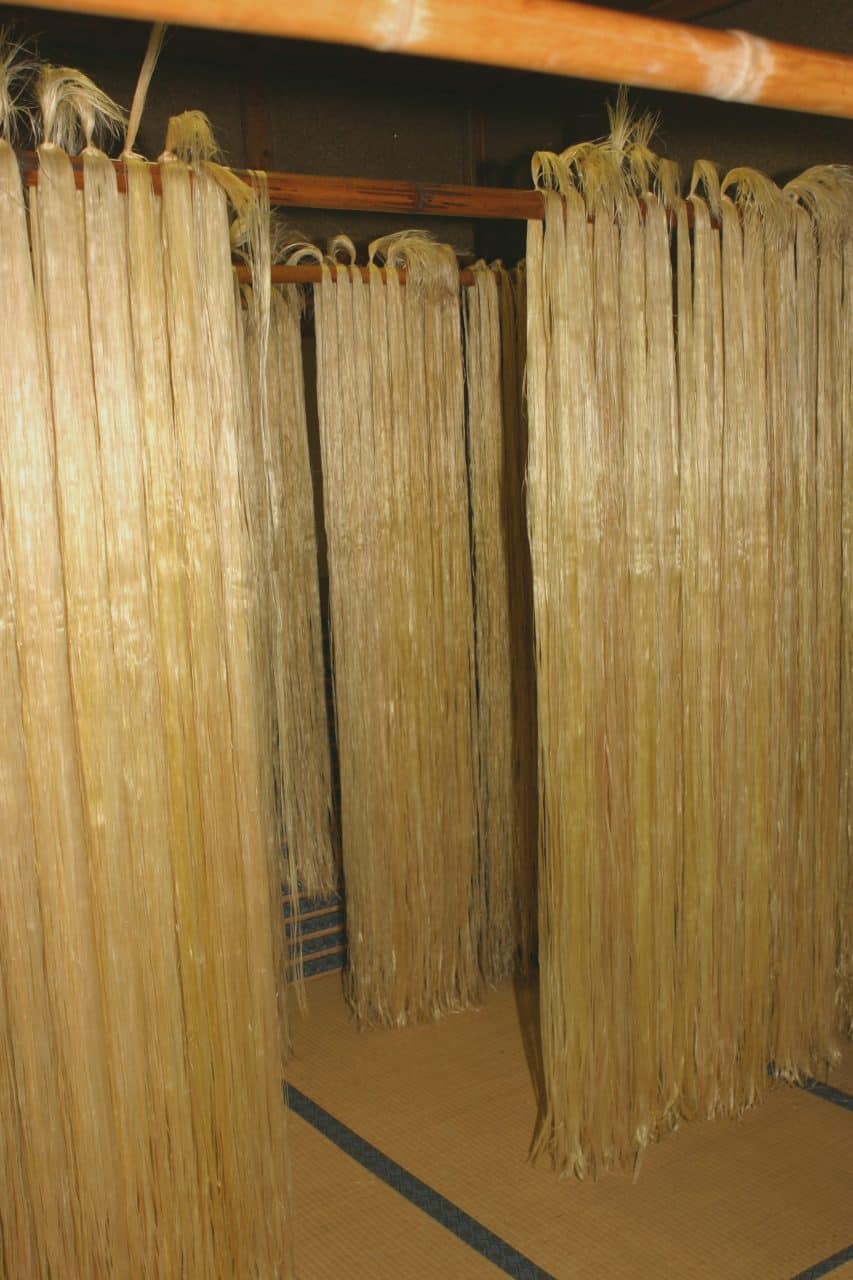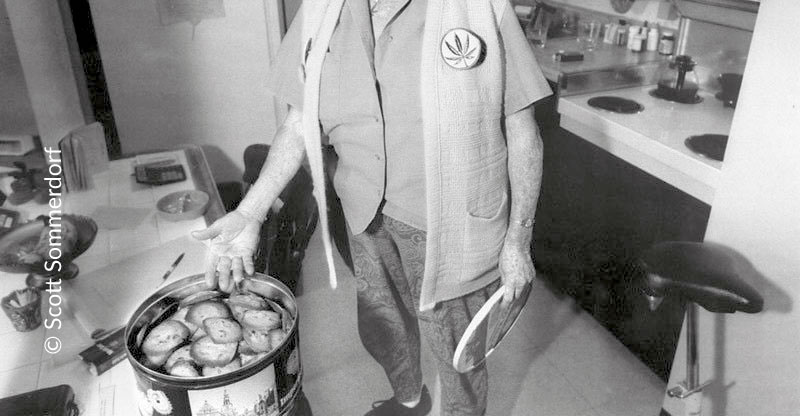Hemp bark
In Tochigi prefecture north of Tokyo, fibre hemp is grown for seima (literally ‘sacred cannabis’), which is used in Shinto rituals. Seima refers to the almost transparent, golden-coloured hemp bark, which is scraped off the stalks and bundled into narrow strips almost two metres long. Harvesting the leaves and flowers is forbidden here, so only the stalks leave the land.
The belief is: the lighter and brighter the colour of the bark, the greater its power of purification. That bright colour was perhaps seen as purity in its most clarified form. By touching it, people may have felt a direct connection with the kami. As an offering, hemp contains the soul and spirit of the kami. Hemp is very expensive these days, and often a cheaper fibre is used as an alternative.










